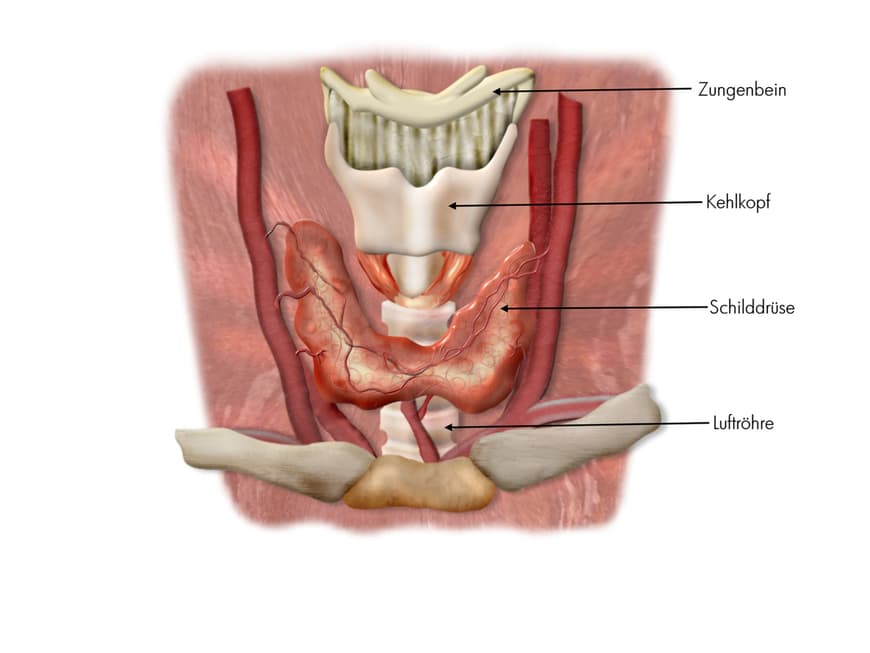Monika's ears perked up when she finally met her cousin Heidi again at her mother's 75th birthday party. She told her about very similar complaints, but that they were caused by a thyroid condition with a strange name. Heidi now took tablets for it and she felt better again. A Japanese doctor discovered the illness It was worth trying to talk to a doctor again about her problems, Monika thought, and contacted her GP, whom she also told about her cousin. The doctor ordered a blood test. And sure enough, Monika also had thyroid problems.
Like her cousin, she suffered from an inflammation of the thyroid gland called Hashimoto's thyroiditis, named after its Japanese discoverer Hakaru Hashimoto. This disease, also known as Hashimoto's for short, is an autoimmune disease. The body's own immune system does not attack pathogens that invade from the outside or its own degenerated cells, as would actually be its task. Instead, it forms antibodies against the thyroid tissue. The result is chronic inflammation, which destroys the thyroid tissue in the long term. Due to the destroyed cells, the thyroid gland produces too few hormones. This manifests itself in the typical signs of hypothyroidism. If the thyroid's hormone stores are attacked by the inflammation at the beginning of the disease, large amounts of hormones can temporarily enter the bloodstream and trigger symptoms of hyperthyroidism. However, the end result is always hypothyroidism caused by a lack of hormones.
Women fall ill much more frequently than men
Hashimoto's thyroiditis does not normally cause any pain and often goes unnoticed for a long time. It is not known exactly what triggers the inflammation. However, predisposition plays a role, as the disorder runs in families. Most people fall ill between the ages of 30 and 50. Women are affected much more frequently than men. Hashimoto's can go hand in hand with other autoimmune diseases such as juvenile diabetes (type 1 diabetes). In women around 50, the disease is particularly easily overlooked - as in Monika's case. This is because the typical symptoms it causes are so similar to many typical menopausal symptoms.
Tablets replace the missing hormones
If the thyroid disease is recognized, this is the first step towards improvement. This is because it is easily treatable. In order for the organ to work properly again, the missing thyroid hormone L-thyroxine must be taken in tablet form. "It is recommended to take it on an empty stomach, otherwise the hormone cannot be absorbed properly," explains Dr. Ursula Marschall, head physician at Barmer GEK. Blood levels should be checked regularly at the start of therapy. There is a reason for this: "Especially at the beginning, the hormone level in the body has to settle. It can take a few months to find the right dosage," says the expert.
Taking the medication improves the symptoms, but tension and nervousness can still remain. "Learning relaxation exercises can be helpful here," says the doctor. Techniques such as "progressive muscle relaxation according to Jacobsen" can also be learned independently and practiced at home. Long walks in the fresh air are also recommended. They brighten the mood and activate the metabolism.


